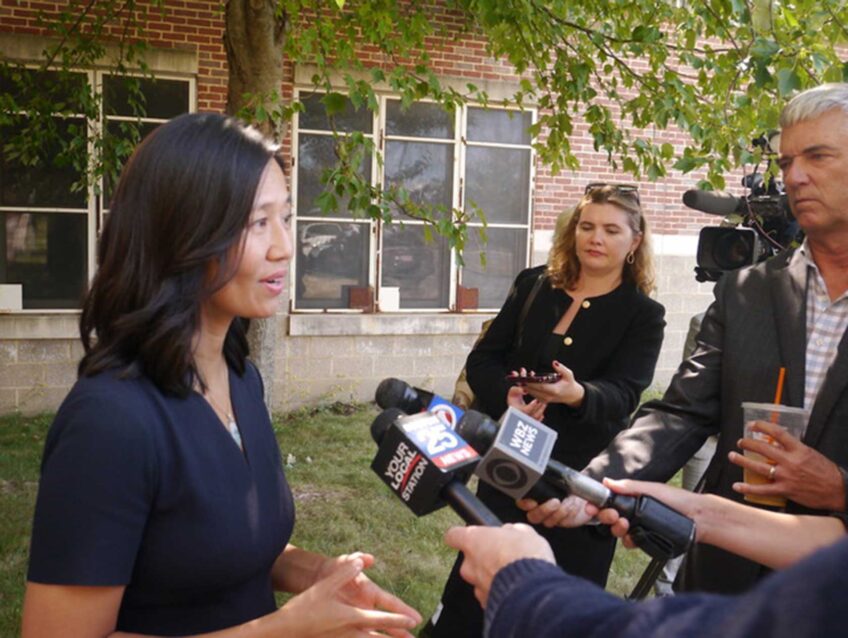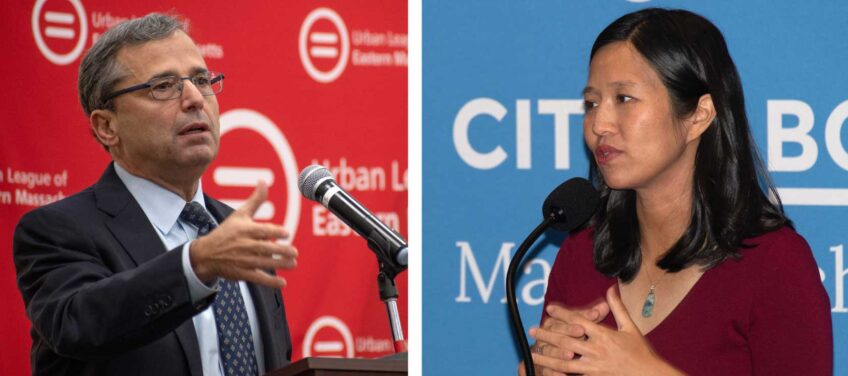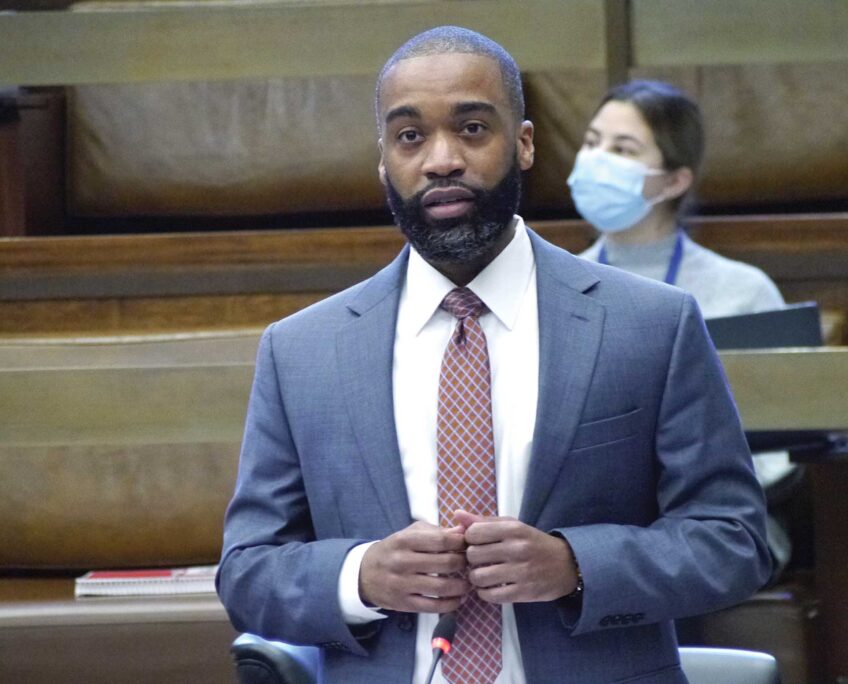

Building Pathways’ most recent class, above, graduated last month from the building trades pre-apprenticeship program, which helps Boston residents, with a focus on women and people of color, learn skills necessary for entering into the industry.
Increasing the numbers of blacks, Latinos Asians and women in the construction industry and the building trades is an uphill battle, with thousands of workers entering each year and the established diversity programs helping a small number so far, but Massachusetts trades organizations say they are committed to the fight.
Mayor-elect Marty Walsh touted his own effort — Building Pathways, a building trades pre-apprenticeship program serving low-income residents of the Greater Boston area.
The program, which he launched while he served as head of the Building and Construction Trades Council of the Metropolitan District, was designed to help Boston residents, with a focus on women and people of color, learn the skills and receive the credentials to enter building trades apprenticeship programs.
With over 20 different trades and several dozen apprenticeship programs throughout the state, Building Pathways aims to help its students find the right career direction.
Launched in 2011, the six-week skills training, assessment and placement program has had five training cycles with 70 graduates, 95 percent of whom are women and minorities. According to Building Pathways statistics, 85 percent of the graduates have been placed in apprenticeship programs. The last class of 16 participants graduated last month, all of whom were low-income minority Boston area residents, including 10 women.
While Walsh has received plaudits for his diversity efforts, the numbers are just a tiny fraction of the workers who enter the building trades on a yearly basis. According to the Massachusetts Building Trades Council, almost 6,500 workers were enrolled in both union and non-union apprenticeship programs last year — with unions spending close to $30 million to recruit and train new workers. Comparably, Building Pathways has graduated 70 over three years.
Walsh says he recognizes that the Building Pathways program is not going to single-handedly diversify the building trades industry overnight, but he says it is an extremely important program for what it is attempting to do and that it can serve as a model for a way to increase diversity.
He also points out that the only reason the program has had any success at all is because the different building trades are behind the efforts and have guaranteed placement of its graduates — they want to increase diversity.
“All of them are very much into it,” Walsh said. “That was the key to this program.
“It is the only program of its kind that is successful,” he added. “It has been very, very effective.”
Despite their professed commitment to diversifying their ranks, none of the union or non-union building trades organizations would disclose the demographics of their workers.
Frank Callahan, president of the Massachusetts Building Trades Council, says the problem is not about a requirement to track diversity, the challenge is so many different unions and organizations that are run separately and have their own bylaws and charters.
“It is difficult on a whole number of fronts,” Callahan said. “I get frustrated about it myself.”
Callahan says he believes the building trades are sincere in their diversity efforts.
“I go out to the union halls, I see the diversity in members,” he said. “It is something that the building trades have been committed to for quite some time.”
District 7 City Councilor Tito Jackson says the unions will have to disclose numbers if they want to make progress on diversifying.
“We know the building trades don’t reflect the population of the city of Boston,” he said. “We need to make sure we’re being thoughtful and deliberate about how we diversify the building trades. We have to be able to measure our gains against a baseline.”
While the Massachusetts building trades continue their efforts without numbers to illustrate the cause, other states that have made pushes for diversity in the trades have estimated numbers — and the results do not reflect much improvement.
A report out of Philadelphia, which cites numbers from the Office of Housing and Community Development collected from 2008 to 2012, found that the makeup of the union members in the building trades by the end of this period were 99 percent male, 76 percent white and 67 percent suburban residents. This number is only union members — non-union numbers have not been recorded — so it may not reflect the true diversity of the building trades workforce.
But the report findings demonstrated that even after Philadelphia officials pushed for diversity there was little impact on the unions that lead the way in the industry.
The National Black Chamber of Commerce was quick to jump on the implications of the report, releasing to the media an open letter in July to U.S. Representative Marcia Fudge, chair of the Congressional Black Caucus.
“We are very disturbed that elected officials as well as civil rights organizations have this cordial relationship with construction unions. Construction unions have consistently discriminated against black workers and contractors,” the letter stated. “Ninety-eight percent of all black construction firms are nonunion. There is a reason — if they join a union the union will manage their employees and thus never hire them for work. The end result is the business being void of any black workers and the former black employees will soon be unemployed.”
The letter also concluded: “These construction unions are a prime contributor to black unemployment.”
Municipal officials in the Maryland, Virginia and the Washington D.C. metro area have also made a push for diversity in the building trades, but like in Massachusetts, there is little data to back up what is actually happening.
While the numbers of minorities in the Massachusetts building trades workforce is small, the increased number of construction projects in Boston has created an opportune time for all parties involved to really target the diversity issue in the Massachusetts building trades.
“Boston is No. 2 in the nation for construction right now, so we are really booming,” said Mary Vogel, executive director of the Construction Institute and program manager for Building Pathways. “This is the opportunity to make sure all of our construction workforce reflects our neighborhoods. Women, in particular, are underrepresented in our industry and we want to make sure they have an opportunity to get these kind of careers.”






